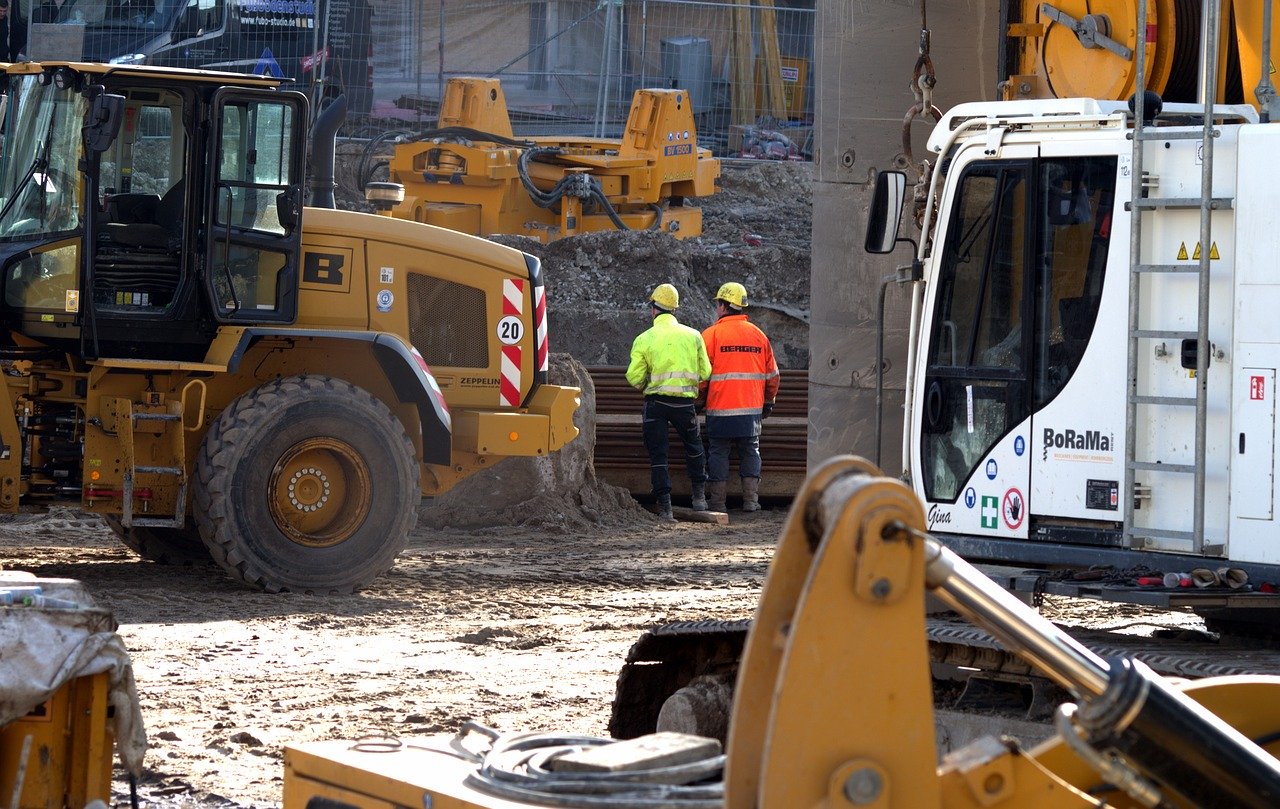A guide to construction reports and reporting
The most successful construction companies choose to generate different reports that share all crucial information needed so construction work can continue on schedule and on budget. These reports used to be handed out in paper forms and then emailed to everyone involved. However in recent years, as technology advanced, everyone can simply click on a programme and have all the filed reports at their fingertips.
This means that everyone can easily refer back to other reports wherever they are and stay current with information shared throughout the workday. Digital reporting can take serious administrative and mental burdens off of those in charge, such as the foremen, project leaders, and project architects.
What is field reporting?
Field reporting is one of the main pillars for the success of every construction project in construction. It gives on-site crew full visibility of the project and a good understanding of what needs to be done. Everyone on site is part of the reporting process with all tasks and activities closely connected. The slightest delay in one task can have a serious impact on the budget and the timeframe of the entire project.

The way progress is documented plays a substantial role. Traditional reporting requires a lot of time and resources on a day-to-day basis, a serious administrative load that can hinder productivity. The way these reports are shared with the rest of the team also matters. Excel and Word were good options ten years ago but in most cases today, they can cause major problems. Back then, everyone worked in an isolated way crippling the different project stakeholders from remaining on top of their field reporting process. Historically, this has led to costly misunderstandings and project delays.
What is a construction report?
There are many different types of construction reports which cover a wide spectrum of activities. Some of the most common construction report categories can be summarised as:
Trend reports
Trend reports are widely used in the construction industry. They offer the latest status on different building construction types and analyse if their importance in the market is going up or decreasing. These reports are produced on an annual basis in order to help stakeholders in the sector get a good overview of the latest market trends and changes.
Materials reports
New materials are disrupting the construction process in the course of the last few years. Construction companies rely on materials reports in an effort to stay up to date with the latest changes, and boost productivity and building quality. To acquire materials reports, contractors will need to purchase or enroll in organisations/services that create these market reports.
Cost reports
Cost reports are substantial for every construction project. They are always used during the bid stage of a project in order to offer an accurate cost estimation concerning the workforce and the materials that will be used. Normally, a cost report is put together by the contractor and it is built according to the design that the client has presented.
What is a construction progress report?
One of the more popular construction reports is the construction progress report, also known as daily report, which is critical for the success of every project. These progress reports normally contain field notes and a list of activities that are accomplished each day. As soon as construction progress reports are shared, everyone involved in the project will be made aware of where things stand and what still needs to be completed.
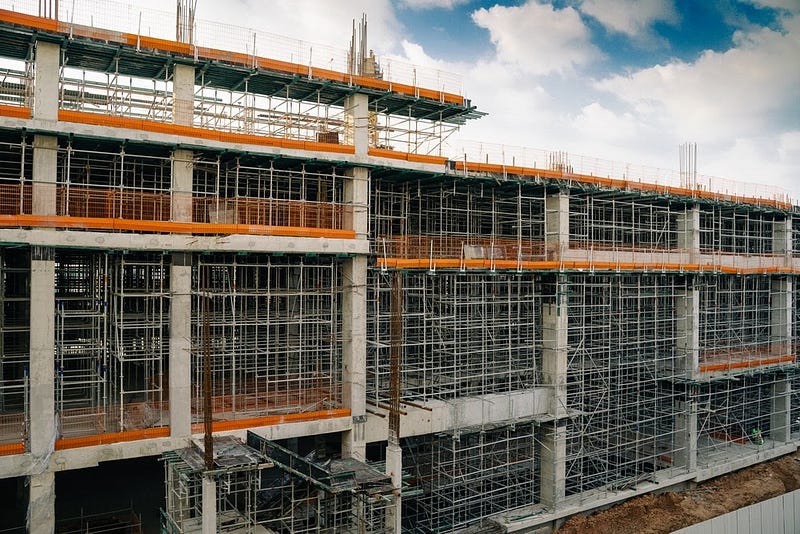
Daily reporting is a must-have for every construction project and the only way to a cost- and time-efficient building process. But for daily reporting to be achieved efficiently, a more digital approach is required.
How do you prepare a field report in construction?
Here are the 10 things that must be included on every daily report:
- Date: The date that the information pertains to, which should also be the date that the report is written and submitted.
- Weather conditions: The weather conditions for that day, as it will show why certain tasks weren’t completed or why everyone left the job site early or arrived late.
- The condition of the construction site: The physical conditions of the job site, which may have affected how much work got done on that day.
- Overview of resources: The resources that were available and unavailable on that day. This list may include employees, equipment, and materials.
- Type and status for the job performed on the field: The work that was performed and the status for each job.
- List of disruptions/delays: A list of any disruptions or delays that occurred on that day.
- Inventory checklist: The inventory checklist that will show what is in stock and what may be arriving later than planned.
- Upcoming risks: The potential risks for future delays, so that everyone can work to avoid these problems.
- Safety and environment-related issues: Any incidents that occurred, whether safety-related or environment related. The employees’ name, as well as specific details and photos, should also be included.
- Additional notes and comments: There may be days when additional notes or comments may be necessary, and they should be included at the end if they do not fit in any of the other categories.
Why are construction reports important?
Leaving any of that information out of the daily report, or choosing to skip a daily field report here and there, can wreak havoc on any project. A missing report may make workers unaware of when they need to be available or it can cause a specific job on the site to go unfinished because no one is aware that the work hasn’t been completed yet.
Daily reports can also be useful at the end of the project if the owner has an issue and wants to go to court over something that was or wasn’t done. These notes can prove that everything was done as it should be, leaving no unanswered questions.

Turning your reporting process digital ensures that no information gets lost and that there is an objective source of truth for everything that took place on the field. Forgetting one small thing in construction reporting can make the difference between staying on budget and making a profit and going over budget and ending up in debt.
Must-haves for data-driven reporting
Construction needs to digitalise its reporting process in order to coordinate field teams better and pave the way for a less error-prone sector. Here are some of the most crucial elements for data-driven reporting:
Generation and sharing of construction reports
Generating detailed and intuitive reports in a simple and fast manner is vital. With the help of a reliable digital tool, you should be able to create a new PDF report and share it with your team in real time. For instance, by using LetsBuild you can add photos, comments and information about the weather in order to give an in-depth understanding of why things happened and when. Timing is very crucial in construction projects, so ideally you want to use a tool that will allow you to filter information based on specific periods and generate field reports accordingly. Keep track of your project’s progress and ensure that everyone is on the same page.
Clear accountability through audit trail reports
For data-driven reporting, you need a digital tool that is able to automatically store all data and the latest changes on them. It also makes it easy for project managers to retrieve all these valuable pieces of information when needed.
With a system like this, the project team will never have to wonder who did what and can feel assured that photos, videos, comments, progress reports and date changes are all logged into the system. An example of an audit trail:
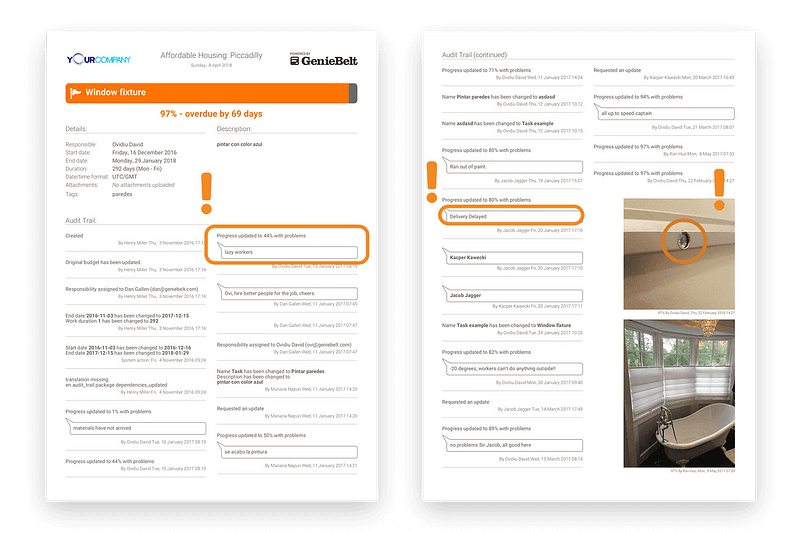
Weather information
Weather is an integral part of the construction process and it can completely turn around the planning of a project. That’s why it is important to have weather reports included in your reporting process. Below is an example of a weather report in LetsBuild:
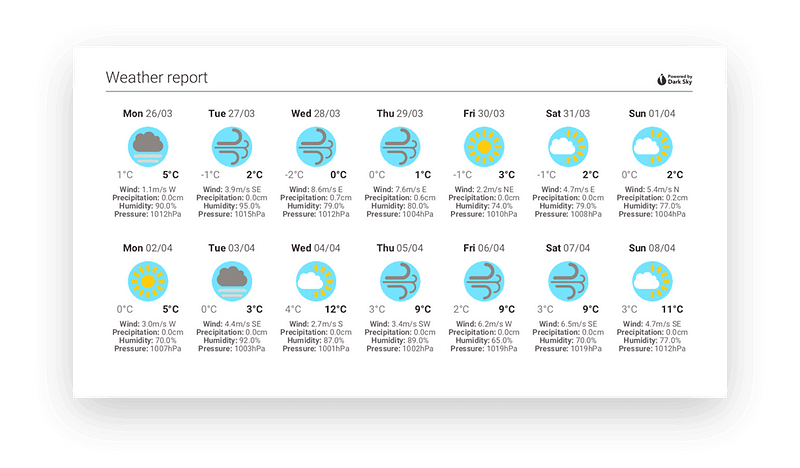
Automatic daily logs and site diary
The ability to automatically record all crucial project information can help project managers maintain their daily logs and up-to-date site diaries while completely eliminating manual paperwork. This leads to time and space savings.
Custom reporting
Projects differ from one to the other and by extension, the reporting process differs, too. Therefore, being able to fully customise your reports and build them according to your project needs is powerful.
In LetsBuild’s platform project managers can use advanced report filters to find and include in their report only the data that they need. The use of report templates can save precious time especially when the project teams are in need of a new construction report.
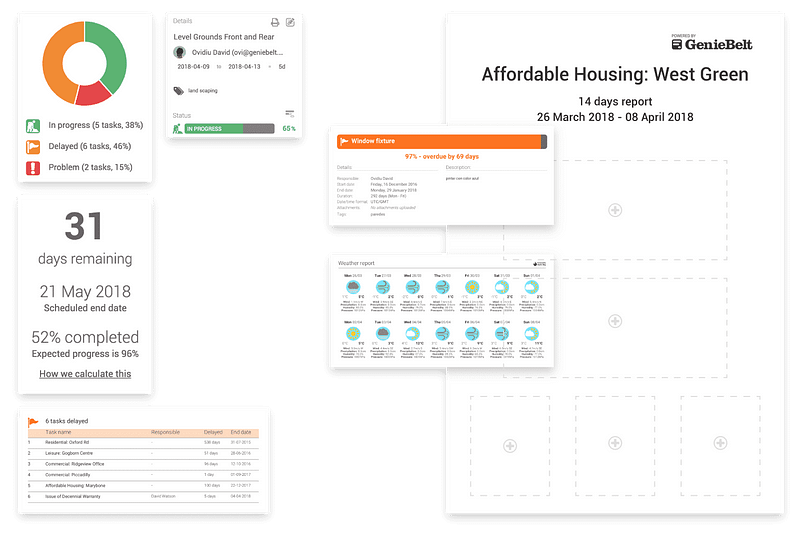
And now, to you!
What main challenges are you battling against during the reporting process? Do you believe that a digitalised construction reporting system will automate unnecessary administrative burden associated with manual reporting? At LetsBuild, we know that a digital reporting tool can save you a lot of time, help you deliver your reports on time, and overall shorten the time or duration needed in manual reporting.





